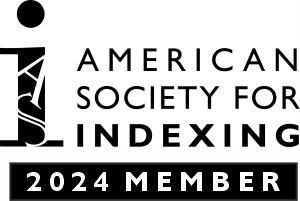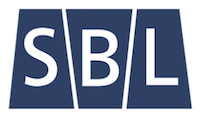Folks often have lots of questions about the information access tools we create every day (indexes and taxonomies). If you, too, were wondering about all of our weird word stuff, here are some answers to those questions.
How is an index different from search?
It’s all about significance, this difference, and the application of human understanding and judgment to choose based on significance. Although search tools have gotten a bit better at narrowing the results based on the mechanical closeness of a phrase or term to what you’re searching for, the computer still does not understand the actual meaning within context of your term (although artificial intelligence in the form of machine learning is getting closer). A human indexer can look through a given text and find only the most significant mentions of your subject (even when the actual term is not mentioned explicitly) and provide you with the highest quality results in the index structure.
What is a cross-reference?
A cross-reference allows the indexer to create connections between subjects or names in the index by referring the user to another entry that has related information (designated by the phrase “see also”). Cross-references can also be used to send users to preferred terms where all of the information is, instead of putting page numbers at the term the user is looking at (designated by the term “see”).
See also cross-references
career progress, 281–288. See also job hunting
drug resistance, 77–79. See also antibiotic resistance and infection control
United Nations. See also Millennium Development Goals; World Health Organization
- Commission of Human Rights, 7–8
- FAO, 85
- on newborn preventable deaths, 165
- on right to safe water, 104
- UNICEF, 16, 152, 162
- United National High Commission for Refugees (UNHCR), 16
See cross-references
automobiles. See cars
ASI. See American Society of Indexers
What’s a taxonomy?
A taxonomy is a scheme of classification. Most folks are used to it being associated with biology (remember Kingdom, Phyllum, Class, Order, Family, Genus, species?). But nowadays the classification idea behind it (running from more general to more specific related subjects in an ordered hierarchy) is used for organizing lots of different groups of information, like medical terms, search engine databases of terms, job listings, etc. If you are searching a database of information, you don’t see the taxonomic structure, but it’s there behind the scenes to provide a standardized structure for folks to add new terms to and to allow the search engine to give you related terms in your results.
What’s an ontology?
In philosophy, ontology refers to the nature of being. In information science, an ontology is a formal naming and definition of the types, properties, and interrelationships of the entities in a particular domain of discourse (say, yellow pages listings, computer programming, etc.). The focus is on the interrelationships in a more “horizontal way” rather than on applying a hierarchy to those relationships. We can add new keywords to an ontology to enrich search.
How do you make an index for an ebook when it has no page numbers?
We create something called an “embedded index.” Instead of just making a separate list of significant terms and names in the form of main headings and subheadings in alphabetical order and then appending it to the book after the pages are final and ready to print, we insert invisible “tags” into the document in the paragraphs where those terms appear, and then the index is generated as an ordered index entry list from all of those tags. In this case, each index entry has a link back to the paragraph or term where it is located in the ebook, rather than having a page number.


